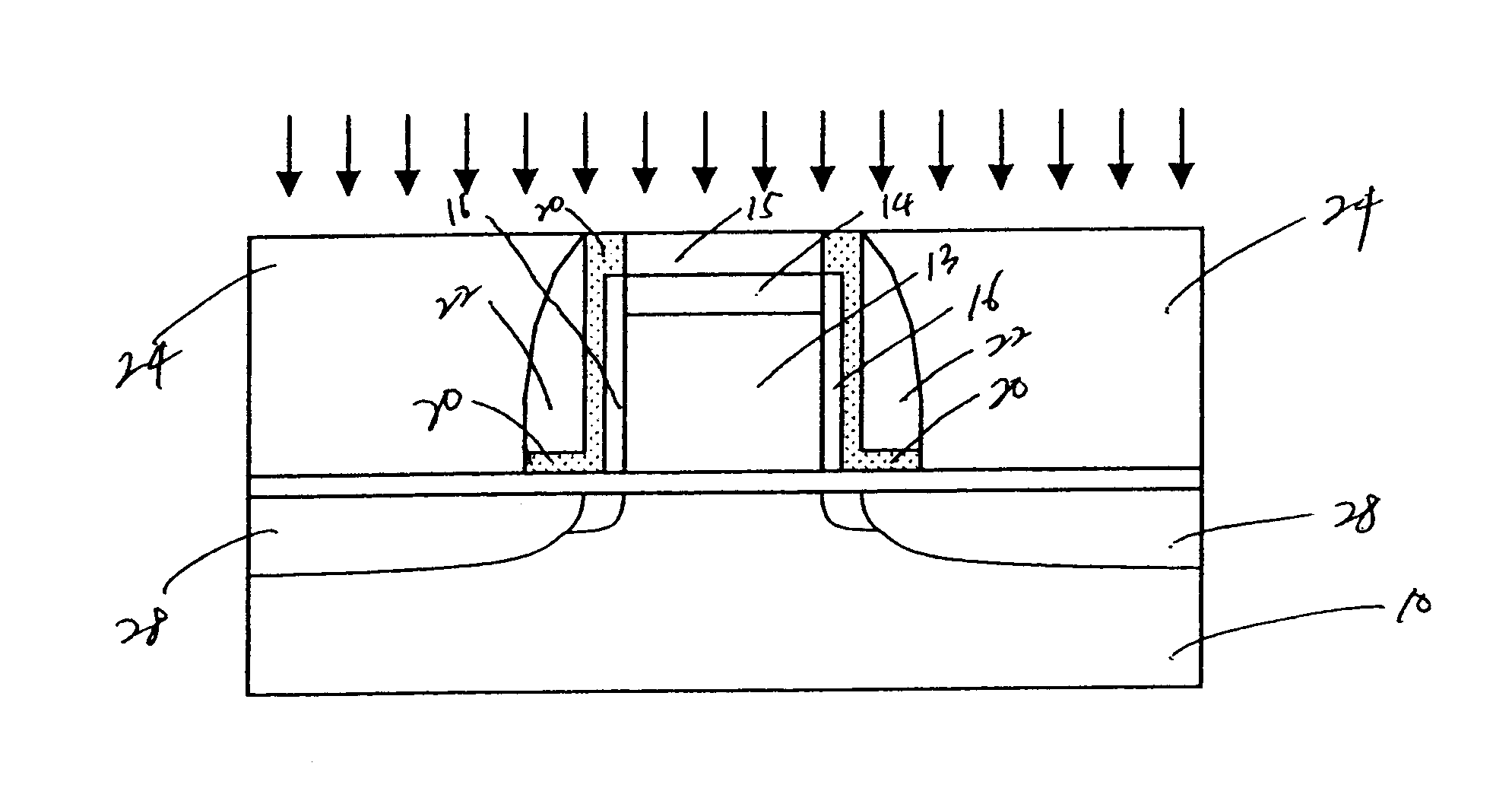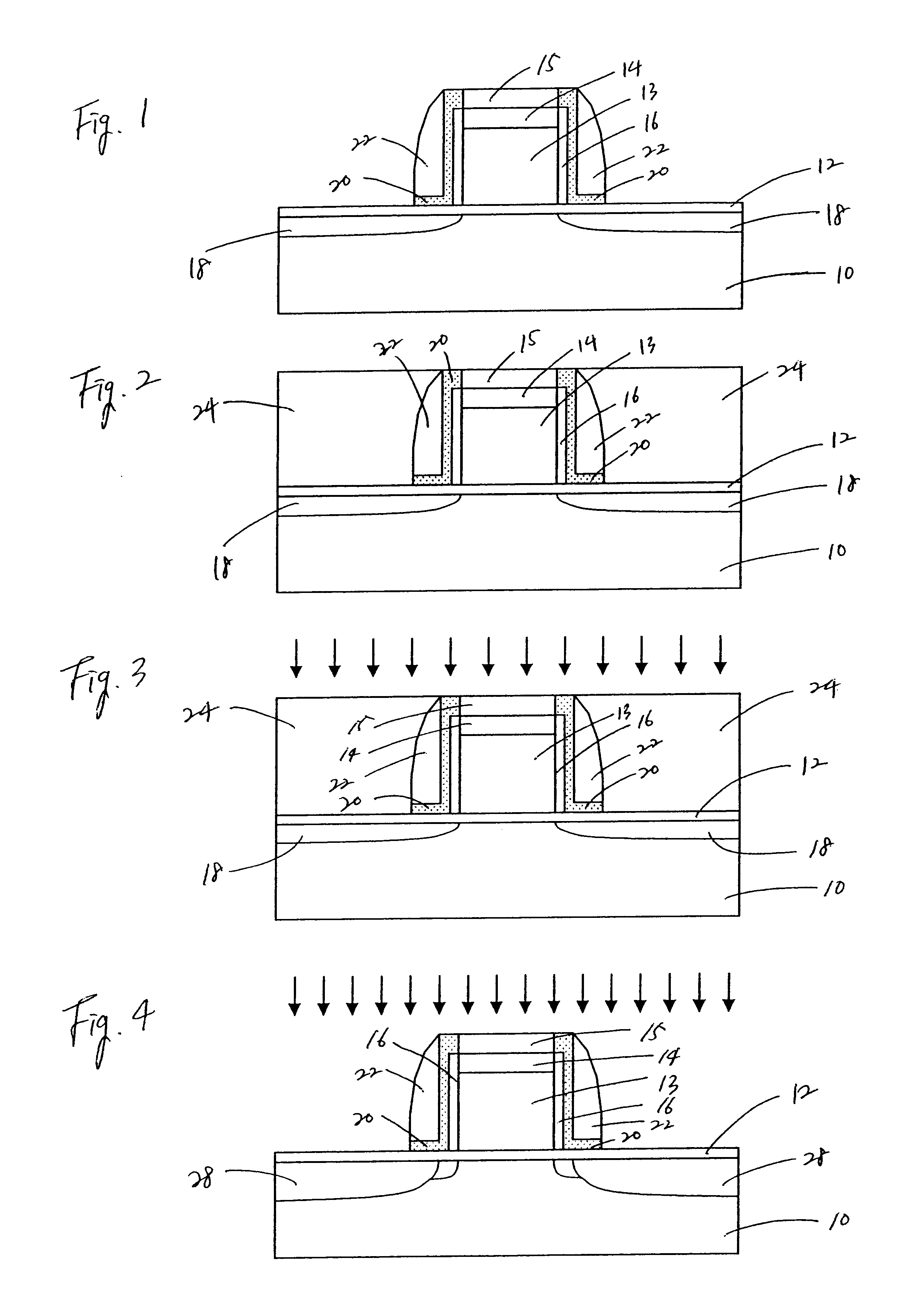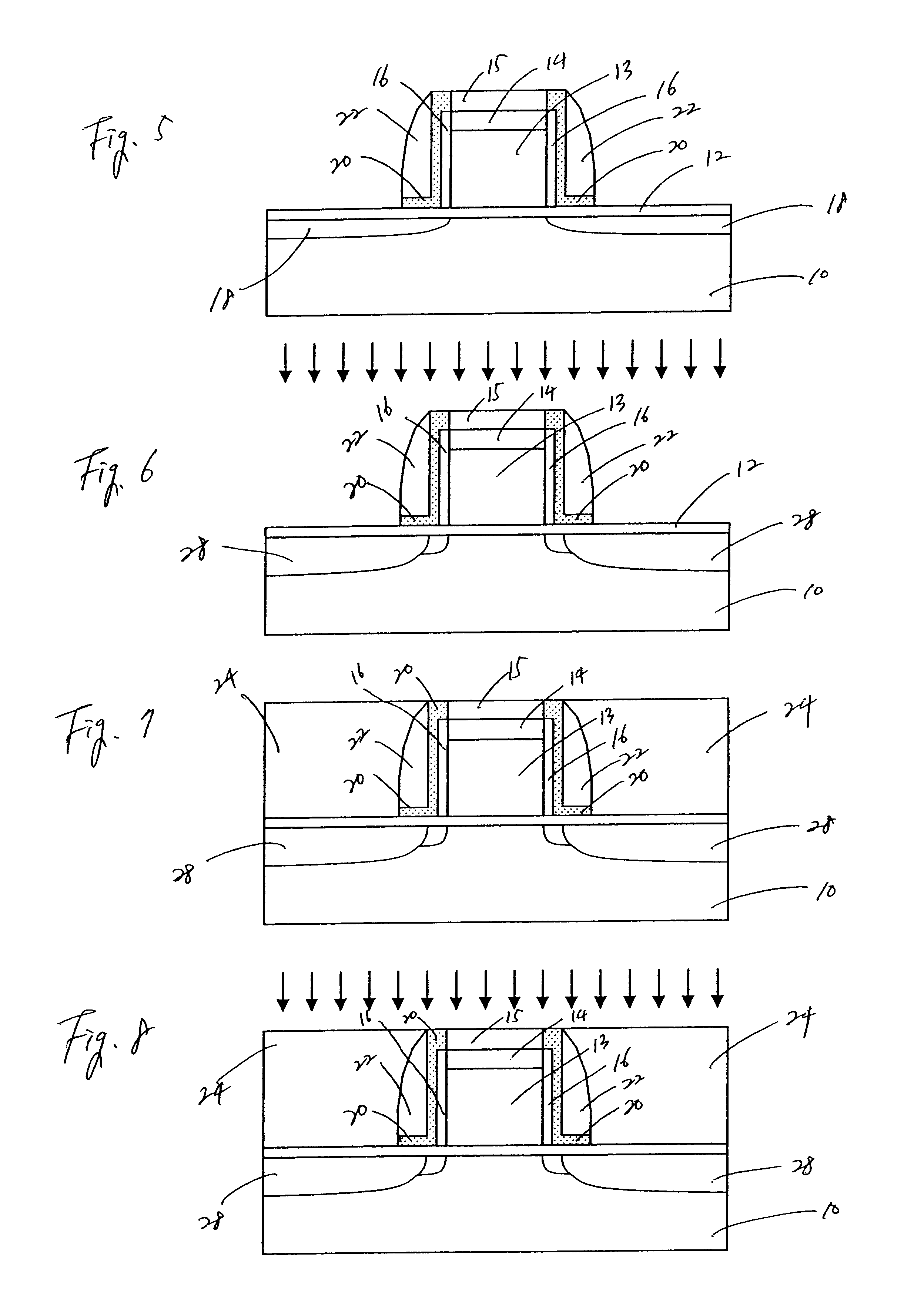CMOS structure with maximized polysilicon gate activation and a method for selectively maximizing doping activation in gate, extension, and source/drain regions
a polysilicon gate and polysilicon gate technology, applied in the field of semiconductor devices, can solve the problems of insufficient activation, insufficient impurity concentration, and excessive lateral diffusion of dopants
- Summary
- Abstract
- Description
- Claims
- Application Information
AI Technical Summary
Benefits of technology
Problems solved by technology
Method used
Image
Examples
first embodiment
With this in mind, referring now to the drawings, FIGS. 1-4 depict a method for manufacturing such device according to the present invention. In FIG. 1, there is shown a sectional view of a semiconductor device, in which a gate electrode 13 is formed on a semiconductor substrate 10 with a gate oxide layer 12 therebetween. On the upper surface of the gate electrode 13, an oxide cap layer 14, a nitride cap layer 15 are formed. On the side surfaces of the gate electrode 13, oxide sidewalls 17, a nitride liner 20 and sidewall spacers 22 are formed.
As conventionally well known, this gate structure can be formed by sequentially depositing a polysilicon layer, an oxide layer (e.g., TEOS) and a nitride layer on the gate oxide layer 12. The layers are etched by conventional lithographic and etching techniques (e.g., reactive ion etching) to shape the gate electrode 13. Preferably, these layers are patterned to form the gate electrode 13 having a gate length smaller than about 0.1 .mu.m. The ...
second embodiment
FIGS. 5 to 8 depict manufacturing steps according to the present invention. The method according to this embodiment involves a slightly different process sequence from the previous embodiment. Thus, the present invention can be implemented in various ways, as readily conceivable from the exemplary embodiments shown herein, and is not limited to certain processing sequences shown herein.
According to the second embodiment, gate doping is performed by two steps. First, the gate electrode is doped during the source / drain implantation step at the impurity concentration predetermined for the source / drain formation and activation, which is not sufficient for the maximum gate activation. To compensate the deficiency in the impurity concentration for the maximum activation, the gate electrode is further selectively doped to increase the chemical impurity concentration while the source / drain regions are blocked from the further impurity implantation.
With this in mind, FIG. 5 depicts a gate st...
PUM
 Login to View More
Login to View More Abstract
Description
Claims
Application Information
 Login to View More
Login to View More - R&D
- Intellectual Property
- Life Sciences
- Materials
- Tech Scout
- Unparalleled Data Quality
- Higher Quality Content
- 60% Fewer Hallucinations
Browse by: Latest US Patents, China's latest patents, Technical Efficacy Thesaurus, Application Domain, Technology Topic, Popular Technical Reports.
© 2025 PatSnap. All rights reserved.Legal|Privacy policy|Modern Slavery Act Transparency Statement|Sitemap|About US| Contact US: help@patsnap.com



